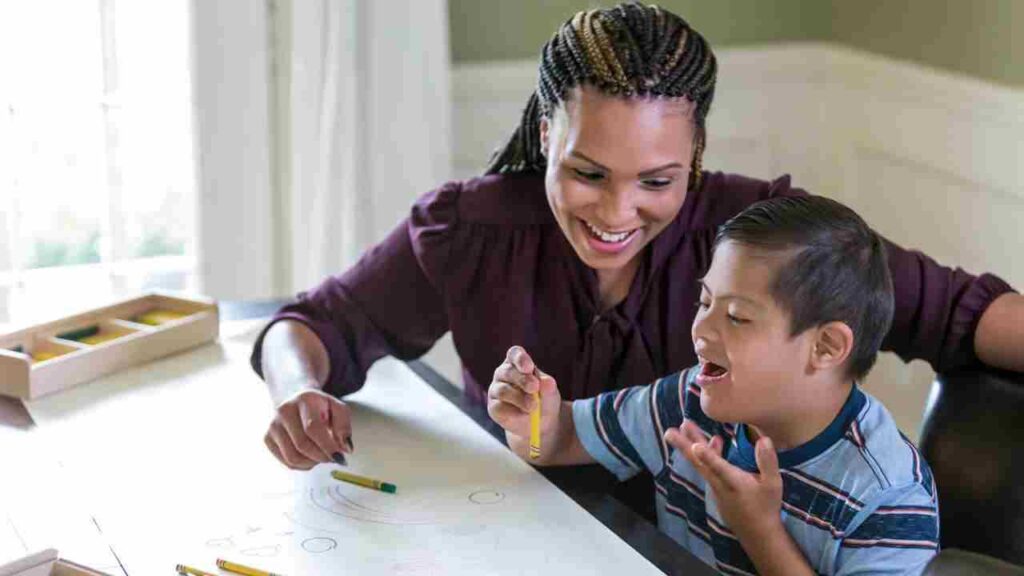In today’s educational landscape, it is increasingly recognized that every child is unique and has different learning needs. This realization has led to the development and implementation of individualized education plans (IEPs) for children.
An IEP is a customized roadmap that outlines specific educational goals, strategies, and accommodations tailored to meet the diverse needs of students. In this article, we will explore the importance of individualized education plans for children and how they can positively impact their academic and personal development.
What is an Individualized Education Plan (IEP)?
An Individualized Education Plan, commonly referred to as an IEP, is a legally binding document created for students with disabilities or special learning needs. The purpose of an IEP is to provide personalized support and accommodations to help these students thrive academically and socially within the school environment.
Who is eligible for an IEP?

However, it’s important to note that not all students with disabilities require an IEP. The decision is based on the impact of the disability on the student’s ability to access and make progress in the general education curriculum.
Read also: Academic Accommodations for Children with Learning Disabilities
Components of an IEP
An IEP consists of several key components that ensure a personalized approach to education:
- Present Level of Academic Achievement and Functional Performance (PLAAFP): This section assesses the student’s current academic skills, strengths, and weaknesses, as well as their functional abilities.
- Measurable Annual Goals: IEPs establish specific, measurable, achievable, relevant, and time-bound (SMART) goals to guide the student’s progress over the course of the year.
- Special Education and Related Services: These services encompass any additional support the student requires, such as specialized instruction, therapies, assistive technology, counseling, or accommodations.
- Supplementary Aids and Services: Supplementary aids and services refer to any supports or modifications necessary to ensure the student’s participation and progress in the general education curriculum and extracurricular activities.
- Accommodations and Modifications: These are adjustments made to the learning environment, curriculum, or assessments to meet the student’s individual needs while maintaining educational standards.
- Participation in Statewide Assessments: IEPs outline any necessary accommodations or alternate assessments that may be required for the student to participate in statewide standardized tests.
- Transition Planning: For students approaching the end of their high school education, IEPs include transition planning to help them smoothly transition into post-secondary education, vocational training, or employment.
Read also: Supporting Student Growth In Special Needs Classes
The Benefits of Individualized Education Plans
1. Addressing Individual Learning Needs
One of the primary benefits of an IEP is its ability to address the individual learning needs of each student. By identifying a student’s strengths, weaknesses, and learning styles, an IEP can guide educators in tailoring instruction to optimize their learning experience. This individualized approach helps to ensure that students receive the support and accommodations they require to reach their full potential.
2. Promoting Academic Success
Individualized Education Plans play a crucial role in promoting academic success. With clear goals, strategies, and accommodations in place, students can experience increased engagement, motivation, and achievement. By focusing on a student’s specific needs, IEPs enable educators to target areas for growth and provide appropriate interventions, ultimately leading to improved academic outcomes.
Read also: Learning Differences in Children: Causes, Symptoms & Treatment
3. Enhancing Social and Emotional Development
Education is not solely about academic achievement; it also encompasses social and emotional development. IEPs recognize this and prioritize the holistic growth of each child. By including strategies and accommodations that support social and emotional development, IEPs create an inclusive and nurturing environment where students can thrive.
4. Fostering Self-Advocacy and Independence
Another crucial aspect of individualized education plans is their emphasis on fostering self-advocacy and independence in students. Through active involvement in the IEP process, students are encouraged to voice their preferences, goals, and challenges. This empowers them to become advocates for their own education and equips them with essential skills to navigate their academic journey and beyond.
5. Collaboration and Communication
IEPs promote collaboration and communication among various stakeholders involved in a student’s education. Parents, educators, specialized service providers, and the student themselves work together as a team to develop, implement, and monitor the IEP. This collaborative approach ensures that everyone is aligned with the student’s goals and enables consistent support across different settings.
6. Legal Protection and Accountability
Individualized Education Plans are not just practical tools; they also carry legal weight and provide essential protections for students with disabilities. The Individuals with Disabilities Education Act (IDEA) mandates that eligible students receive a free and appropriate public education (FAPE) in the least restrictive environment. IEPs serve as legal documents that outline the necessary supports and services required to meet these standards. By having an IEP in place, students and their families have recourse if their educational rights are not adequately met.
Read also: Supporting Special Needs Students: Finding The Right Resources
(Frequently Asked Questions)
1. Are individualized education plans only for students with disabilities?
No, individualized education plans (IEPs) are primarily designed for students with disabilities or special learning needs. However, students without disabilities can also benefit from personalized education plans, such as gifted education plans or advanced learning plans.
2. How often are IEPs reviewed and updated?
IEPs are typically reviewed and updated annually, but they can be reviewed more frequently if needed. Regular assessments and progress monitoring ensure that the plan remains relevant and effective in meeting the student’s evolving needs.
3. Can parents request changes to an existing IEP?
Yes, parents play a crucial role in the IEP process and can request changes to an existing IEP if they believe it is necessary to better support their child’s needs. Open communication with the school and active participation in meetings is key to addressing any concerns or proposed modifications.
4. Are IEPs applicable in post-secondary education settings?
While individualized education plans are typically associated with K-12 education, post-secondary institutions may offer similar support systems for students with disabilities. These plans may differ in structure and terminology but serve a similar purpose of ensuring accommodations and support for continued academic success.
Conclusion
In conclusion, individualized education plans (IEPs) are invaluable tools that cater to the diverse needs of students with disabilities or special learning needs. By tailoring education to meet individual strengths, weaknesses, and goals, IEPs promote academic success, social-emotional development, self-advocacy, and collaboration. They ensure that each child receives the necessary support, accommodations, and interventions to thrive in their educational journey. IEPs are not only practical guides but also legal documents that safeguard the rights of students with disabilities. By recognizing the importance of individualized education plans, we can create inclusive and empowering learning environments that enable every child to reach their full potential.








